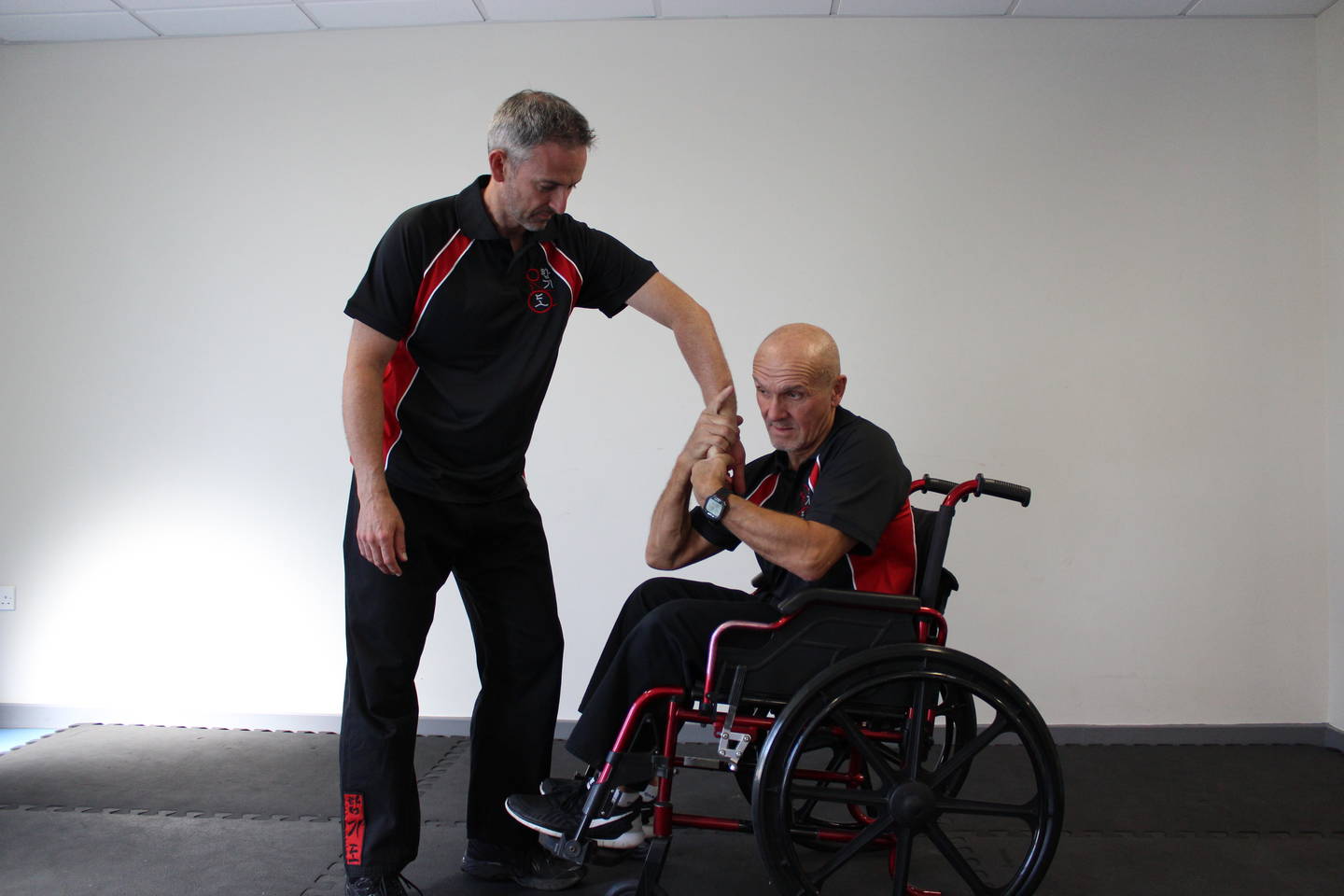Blog: “The Way of the Wheelchair Warrior”
The English Federation of Disability Sport (EFDS) website features a blog post every Friday through the year. This week, Rick Lee discusses martial arts, having recently written a self-defence book aimed at wheelchair users and mobility-impaired people.

My name is Rick Lee, and I was born in the city of Hull in 1953. It was immediately obvious at my birth. I had a “club” left foot (congenital talipes equinovarus) or paddle foot. This took until the age of eleven years old to modify, reaching a reasonable outcome with surgery and manipulation. It did not however hinder my physical progress and participation in many different activities. I have never considered myself to be disabled until a few years ago when I had to have a hip replacement mainly due to wear and tear caused by 60 years of compensating for my foot. In the months prior to my operation I was unable to walk at all.
As a martial artist of some 30 years it suddenly became apparent how vulnerable I had become. I have recently completed a book, The Way of The Wheelchair Warrior, which is basically an adapted self-defence system using the martial art of Hapkido and is dedicated to wheelchair users and mobility impaired men and women. As far as I know the book is unique. Having searched the internet for relevant material, I discovered there was nothing out there to give quality self-defence instruction to cater for this group other than one or two YouTube videos. This is the first volume with another to follow which will be looking at break-falling from the chair, ground defences and more advanced techniques for experienced students. There will also be an edition specialising in the use of the walking stick (cane) for non-disabled martial arts students as well as those with mobility impairments.
Hapkido is a combative system and a practical form of self-defence, there are no sporting aspects to the art. Unlike many other styles there are no traditional “patterns” or “forms”. This involves learning about the many facets of martial arts and includes:
- Practical stances and evasion skills
- Dealing with realistic close- contact situations
- Defences against grabs, holds, chokes and hold downs
- Blocking and countering realistic strikes
- Effective striking and kicking
- Control and restraint joint locks and holds
- Pressure point manipulation
- Defence against armed and multiple attackers
Some people initially think these techniques are not open to wheelchair users or those with mobility impairments, but this really isn’t the case.
The martial art of Hapkido is very technical and is based on technique, not strength, to achieve its aims. I have taught and studied Hapkido for the past thirty years and have spent the past three years adapting some of our repertoire to cater for wheelchair and mobility-impaired students. As well as running regular Hapkido classes of my own in Dorchester at the Thomas Hardye School where I am a teacher, I have already started to go out into the community. This includes a monthly class at The Ross Moore Leisure Centre in Poole for the Dorset Disabled Sports organisation as well as one-off seminars such as at the Beaufort Community Centre in Bournemouth in April.
If you’re thinking of joining us or perhaps even starting your own regular club and sessions with a little help from ourselves, all are welcome. Remember you will need non-disabled partner to participate in training and check out your suitability with your GP or consultant before commencing any sessions.
The book will be available as a hard copy via the website or as an eBook on Amazon in mid-May. DVDs to accompany this will be available through the website by the end of June.
Want to know more, or thinking of taking a class? Visit the Hapkido Wheelchair Warriors website.